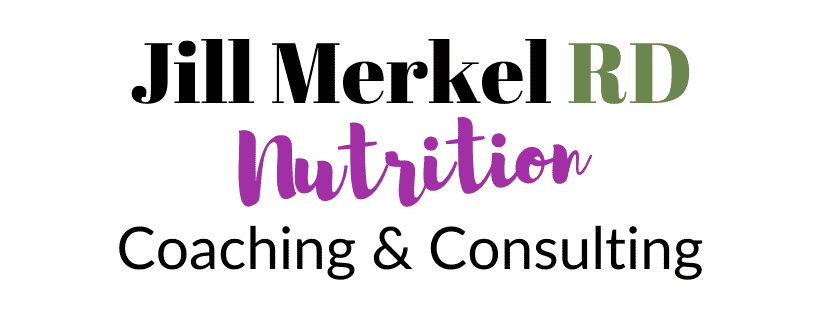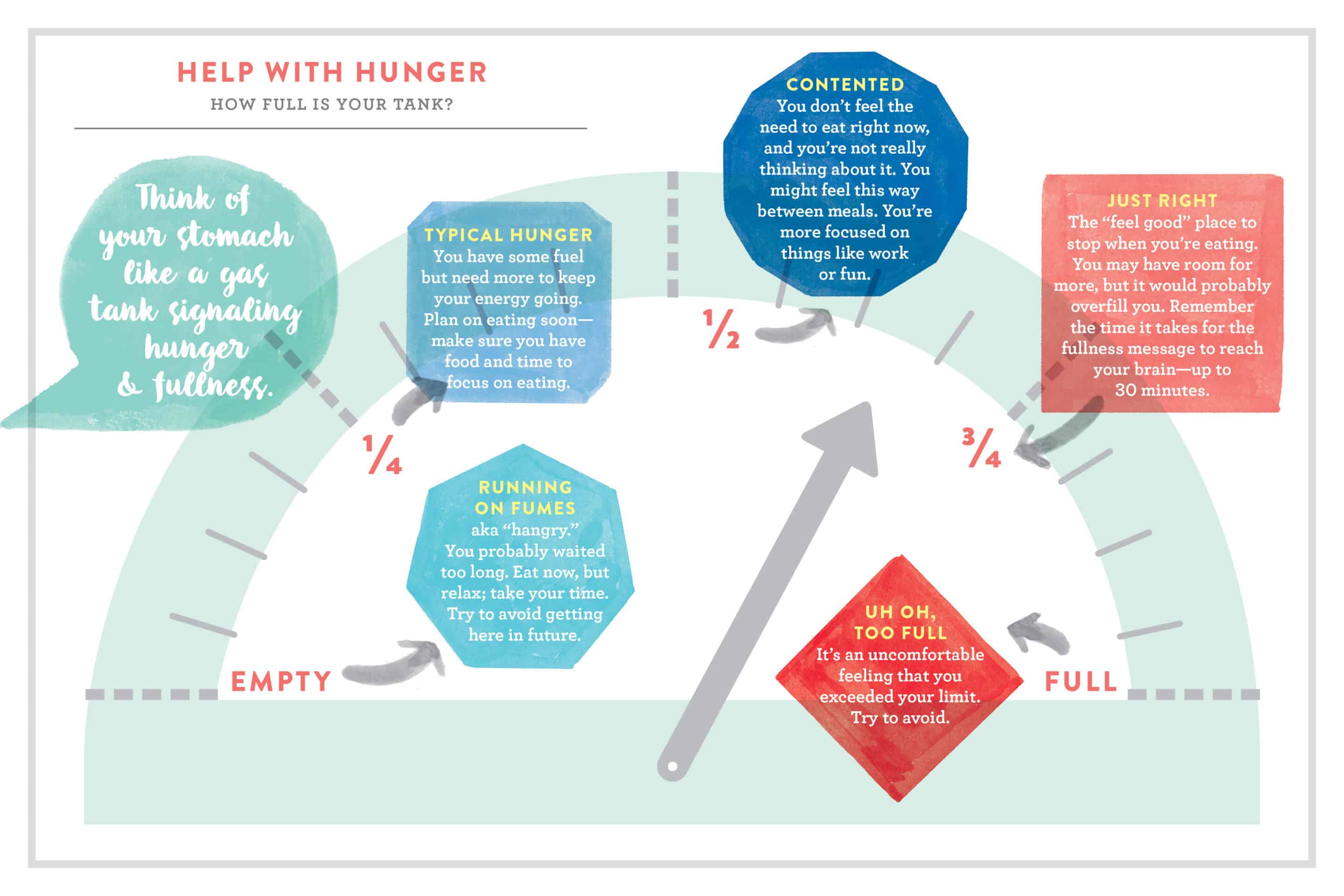I recently started reading the book Eat What You Love: Love What You Eat and she begins by talking about why and when we eat. She wrote, “if you start eating when you’re not hungry, how do you know when to stop?”
Wow. I just love that. In a world where food is abundant and readily available, it’s common that individuals have lost touch with their actual physical hunger and fullness signals. Our hunger cues are designed in order to let us know when we need to eat. But if we eat before those hunger cues begin, how do we know how much to eat?
It got me thinking about how often we eat:
1) for reasons other than actual physical hunger
2) mindlessly, without actually paying attention to our body’s hunger and fullness cues
Hunger and Fullness Cues
I love this hunger & fullness scale image from the book Body Kindness:
Thinking of your stomach and your body like you do your car’s gas tank can be really beneficial. You want to avoid getting to Empty because by then it is likely too late to make good choices. At this point, you are likely so hungry that you may overeat, make impulsive decisions, or just go for whatever is readily available. I also loved from the book the notion that when you are extra hungry (running on E), that doesn’t mean your body needs MORE food at that time, it’s just that you need to eat SOON. Have you ever been so hungry (hangry) that you scarfed down your food so fast and then were uncomfortably full afterwards? I know I have.
Also then avoiding going over full. Sometimes it’s tempting to put in a little extra gas in our car’s fuel tank once it tells us it is full in order to hit a certain number but our bodies don’t need that extra fuel. This is where it’s important to eat slowly and really be present – savor the food, ask yourself if it’s really satisfying what your body wants, and listen to your fullness cues when you start to feel full.
In the book, she also mentions this quote:
“I realized that asking myself if I’m hungry before I eat is like checking the fuel gauge before stopping for gas. There’s a station that I could stop at on nearly every corner, but until I need gas, it’s a waste of time and energy.”
Again, I love this so much!
So here’s what I recommend trying. Next time you find yourself reaching for food, stop and ask yourself “Am I hungry?” and then, if so, “How hungry am I?”. On a scale of 1-10 with 1 being ravenous (or running on E) and 10 being so stuffed you wouldn’t want to eat another bite. And remember, just because you’re extra hungry at any given moment, does not mean that your body needs MORE food at that time. So try eating a few bites to curb the hangry and then continue to be mindful, eat slowly, and enjoy the food. Oftentimes, food taste better and is more satisfying when you are physically hungry rather than when you are eating for reasons other than hunger.
And while I am only just beginning this book, I already highly recommend reading Eat What You Love: Love What You Eat.



Trackbacks/Pingbacks